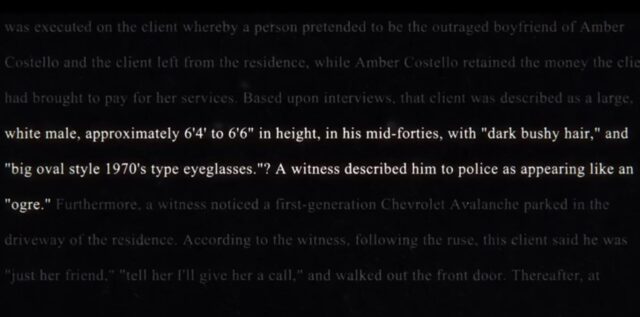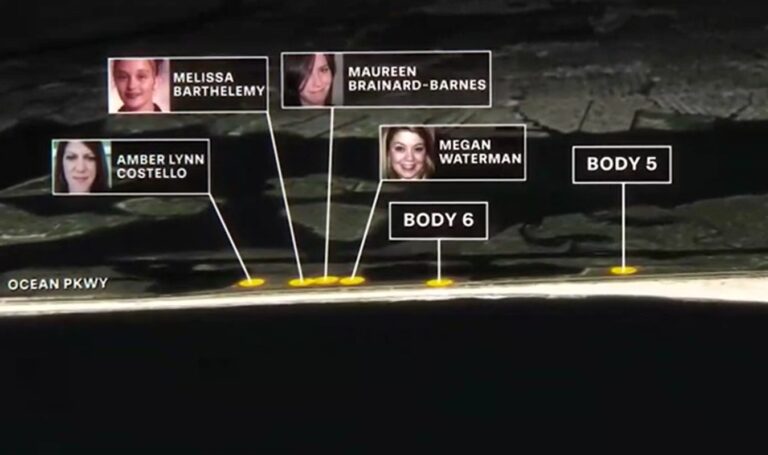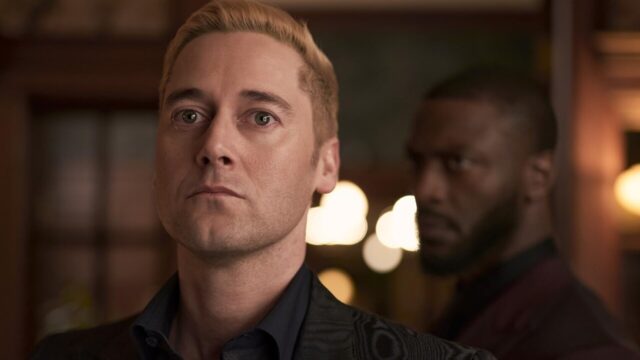The hunt for the Long Island Serial Killer has gripped the public for over a decade, and Netflix’s latest true-crime docuseries, Gone Girls: The Long Island Serial Killer, promises to deliver a gripping deep dive into the case.
With firsthand accounts, never-before-seen evidence, and chilling insights into how Rex Heuermann was finally caught, this three-part series is set to be one of the most haunting true-crime releases of the year.
How Did Authorities Finally Catch the Long Island Serial Killer?
For years, the case remained a terrifying mystery. But when Rodney Harrison became the new police commissioner of Suffolk County in 2021, he reignited the investigation.

By assembling the Gilgo Beach Homicide Investigation Task Force in 2022, law enforcement took a fresh approach, meticulously combing through old evidence with new technology.
The killer’s profile was pieced together – a man over six feet four inches tall, driving a Chevy Avalanche, and using burner phones to contact his victims.

Digital forensics revealed that the suspect commuted from Massapequa Park to New York City, and investigators tracked a burner phone that followed the same pattern. Every time the phone was active, so was Rex Heuermann.
But the final nail in the coffin? A discarded pizza box. When authorities collected DNA from Heuermann’s leftover crust, it matched the hair found at one of the crime scenes.

That revelation, combined with his eerie online searches and an arsenal of firearms in his basement, made it clear – Heuermann wasn’t just a suspect. He was the monster they had been hunting.
What Dark Secrets Does Gone Girls Reveal?
Netflix’s Gone Girls doesn’t just recount Heuermann’s arrest; it dives deep into his disturbing double life. Former employees describe his unsettling familiarity with Long Island’s beach areas.

His internet searches reveal an obsession with the Gilgo Beach murders, explicit violent pornography, and even detailed guides on torture.

The most shocking discovery? A deleted document recovered from a hard drive in Heuermann’s home – an eerie guide on how to torture victims, what equipment to use, and how to dispose of evidence. This was not a crime of impulse. It was calculated, methodical, and utterly chilling.

Yet, even with all this evidence, Heuermann has pleaded not guilty to all seven murder charges. The biggest unanswered question remains – what drove him to target these women?
Why Did It Take Over a Decade to Catch Him?
The Gilgo Beach murders weren’t just a failure of police work – they were a reflection of society’s neglect of sex workers. As Gone Girls highlights, the victims were women on the margins, their cases often ignored or dismissed due to their profession.

Director Liz Garbus, who had previously explored the case in her 2020 film Lost Girls, sheds light on how systemic biases and political struggles slowed down justice. The stigma surrounding sex work made it easier for a serial killer to operate in the shadows.
Even when women raised red flags about Heuermann’s behavior, they were hesitant to report him – fearful of legal repercussions rather than expecting protection.
What Do the Families of the Victims Have to Say?
For the loved ones left behind, Heuermann’s arrest is both a victory and a painful reminder of the horrors they endured. Amanda Funderburg, the sister of victim Melissa Barthelemy, calls him a “monster” and takes solace in knowing he “wasn’t as smart as he thought he was.”

Yet, there is still cautious optimism. Elizabeth Meserve, the aunt of Megan Waterman, refuses to celebrate just yet. “When someone is found guilty, that’s when it will be like…we found Megan’s killer,” she says. “But I think nobody wants to get too hopeful, to be disappointed.”
Final Thoughts: Will Gone Girls Finally Bring Closure?
While the docuseries can’t undo the pain these families have endured, it does aim to spark change. By shedding light on the injustices that allowed Heuermann to operate for so long, Gone Girls forces viewers to confront the harsh reality of how society treats vulnerable victims.
Through chilling interviews, investigative breakthroughs, and a deep dive into Heuermann’s twisted psyche, Netflix’s latest true-crime docuseries is a must-watch.
Gone Girls is more than just a recounting of a crime – it’s a call for justice, a look at the failures that let a predator roam free, and a chilling reminder that some monsters hide in plain sight.

About Gone Girls: The Long Island Serial Killer
Gone Girls: The Long Island Serial Killer is an American documentary series directed by Liz Garbus, focusing on the Gilgo Beach serial killings from the perspective of victims and their loved ones. The case involves multiple unsolved murders linked to Long Island’s South Shore.
The series delves into the investigations, victim stories, and the impact on families. Garbus, who previously directed the fictionalized account “Lost Girls” about the same case, brings a documentary approach to the real-life events.
Announced in August 2023, the series released on 31 March 2025 and is available for streaming on Netflix. It provides an in-depth look at the crimes, law enforcement efforts, and the ongoing search for justice in one of America’s most notorious unsolved serial killer cases.










No Comments on Netflix’s Gone Girls: The True Story of the Long Island Serial Killer